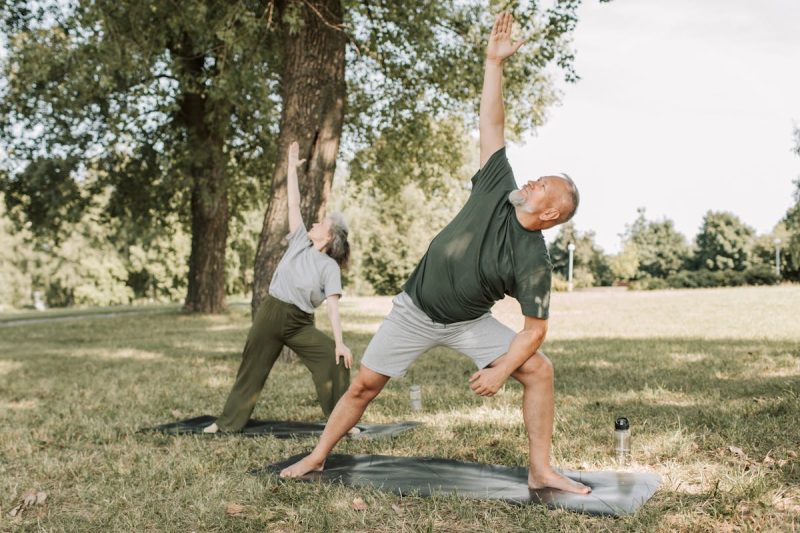Bone health plays a vital role in overall well-being, particularly as we grow older. As life expectancy continues to rise, the importance of maintaining strong bones becomes increasingly significant. This article explores a variety of exercises to boost bone strength, highlighting their benefits, underlying mechanisms, and practical applications.
Understanding Bone Health
Bones serve as the framework for our bodies, providing support, protection for vital organs, and a reservoir for minerals such as calcium and phosphorus. The health of our bones is influenced by several factors, including genetics, nutrition, hormones, and, importantly, physical activity.
Bone density typically peaks in the late 20s to early 30s. After that, bone resorption begins to outpace formation, leading to gradual bone loss. This process can be accelerated by factors such as a sedentary lifestyle, poor nutrition, hormonal changes, and certain medical conditions. Engaging in regular physical activity is one of the most effective strategies to combat this natural decline.
The Importance of Exercise for Bone Health
Regular exercise not only strengthens muscles but also plays a critical role in enhancing bone density. Weight-bearing and resistance exercises are particularly effective at stimulating bone formation. When you engage in physical activities, your bones are subjected to stress, which triggers the body’s bone-building cells, known as osteoblasts, to increase production. This process not only improves bone density but also enhances coordination, balance, and overall strength, reducing the risk of falls and fractures.
Types of Exercises to Boost Bone Strength
To effectively boost bone strength, it’s essential to incorporate a variety of exercises into your routine. Here are the primary categories of exercises that can help strengthen bones:
1. Weight-Bearing Exercises
Weight-bearing exercises involve activities where you work against gravity. These exercises help in building and maintaining bone density by applying stress to the bones, which stimulates bone formation.
Examples of Weight-Bearing Exercises:
- Walking: A simple and accessible exercise, walking can be done almost anywhere. Aim for at least 30 minutes a day, five times a week.
- Jogging or Running: Higher impact than walking, running places more stress on the bones, leading to greater bone density benefits.
- Dancing: This fun activity not only lifts your spirits but also provides weight-bearing benefits. Consider joining a dance class or dancing at home to your favorite music.
- Hiking: Nature walks on varied terrain enhance strength and stability while being an enjoyable way to connect with the outdoors.
- Stair Climbing: Using stairs instead of elevators can effectively boost bone strength. You can also incorporate stair climbing into your workout routine at the gym.
2. Resistance Training
Resistance training, also known as strength training, involves working against resistance to build muscle strength and endurance. This type of training is particularly effective for enhancing bone density.
Examples of Resistance Training Exercises:
- Weight Lifting: Using free weights or weight machines at the gym can help you build muscle and strengthen your bones. Focus on major muscle groups, including legs, arms, back, and core.
- Bodyweight Exercises: Exercises such as squats, push-ups, lunges, and planks utilize your body weight for resistance, effectively building muscle and enhancing bone strength.
- Resistance Bands: These elastic bands can be used for various exercises that target different muscle groups. They are portable and can be used at home or on the go.
3. Balance and Flexibility Exercises
While not directly impacting bone density, balance and flexibility exercises play a crucial role in fall prevention. Strong bones are important, but maintaining balance and flexibility helps reduce the risk of fractures due to falls.
Examples of Balance and Flexibility Exercises:
- Yoga: This practice promotes flexibility, balance, and strength. Many yoga poses also engage multiple muscle groups, contributing to overall bone health.
- Tai Chi: This ancient Chinese martial art focuses on slow, controlled movements and balance. Regular practice can improve coordination and reduce fall risk.
- Pilates: Like yoga, Pilates emphasizes core strength and flexibility. It helps improve posture and balance, essential components for preventing falls.
4. High-Impact Exercises
High-impact exercises, while not suitable for everyone, can be incredibly effective for boosting bone strength in those who are capable of performing them safely. These exercises involve more vigorous activity that places significant stress on the bones.
Examples of High-Impact Exercises:
- Jumping Rope: This childhood favorite is an excellent cardiovascular workout that also improves bone density.
- Plyometrics: These explosive movements, such as box jumps and burpees, can significantly increase bone strength when done correctly.
- Sports: Engaging in sports like basketball, soccer, or tennis not only promotes bone health but also provides social interaction and enjoyment.
Guidelines for Safe Exercise
While exercise is beneficial for bone health, safety should always be a priority. Here are some guidelines to follow when incorporating exercise to boost bone strength into your routine:
1. Consult with a Healthcare Professional
Before starting any new exercise program, especially if you have existing health conditions or are over the age of 50, consult with a healthcare professional. They can provide personalized recommendations and ensure that your exercise plan is safe.
2. Start Slowly and Progress Gradually
If you are new to exercise or returning after a break, start slowly. Gradually increase the intensity, duration, and frequency of your workouts to avoid injury and allow your body to adapt.
3. Focus on Proper Form
Maintaining proper form during exercises is crucial to prevent injuries. If you are unsure about your technique, consider working with a certified trainer who can guide you through proper movements.
4. Mix Up Your Routine
Incorporate a variety of exercises into your routine to target different muscle groups and keep your workouts interesting. Aim for at least 150 minutes of moderate-intensity aerobic activity, along with two days of strength training each week.
5. Listen to Your Body
Pay attention to how your body responds to exercise. If you experience pain, dizziness, or any unusual symptoms, stop the activity and consult a healthcare professional.
Nutritional Support for Bone Health
In addition to exercise, nutrition plays a vital role in bone health. Consuming a balanced diet rich in calcium, vitamin D, and other essential nutrients supports bone strength and overall health. The following nutrients are particularly important for maintaining healthy bones:
1. Calcium
Calcium is a critical mineral for bone health, making up a significant portion of bone mass. Approximately 99% of the body’s calcium is stored in the bones and teeth, where it provides structural support. Adequate calcium intake is crucial for bone development and maintenance, especially during childhood, adolescence, and later in life.
Recommended Daily Intake:
- The recommended daily intake of calcium varies by age and gender:
- Adults (19-50 years): 1,000 mg/day
- Women over 50 and men over 70: 1,200 mg/day
Calcium-Rich Foods:
To meet your calcium needs, aim to include the following foods in your diet:
- Dairy Products:
- Milk: A great source of calcium, providing about 300 mg per cup. Low-fat or fat-free options are beneficial for those managing weight.
- Yogurt: Not only high in calcium but also contains probiotics, which can promote gut health. A serving can provide around 300-400 mg of calcium.
- Cheese: Varieties like mozzarella, cheddar, and parmesan are calcium-rich; one ounce can contain around 200-300 mg.
- Leafy Green Vegetables:
- Kale: One cup of cooked kale offers about 250 mg of calcium. It’s also packed with vitamins A, C, and K.
- Broccoli: Another excellent option, with about 180 mg of calcium per cooked cup. It’s also a good source of fiber.
- Collard Greens: One cup cooked can provide about 250 mg of calcium and is rich in antioxidants.
- Fortified Foods:
- Fortified Tofu: Made with calcium sulfate, a half-cup serving can contain around 200-400 mg of calcium.
- Fortified Orange Juice: Many brands add calcium, offering about 300 mg per cup.
- Cereals: Certain cereals are fortified with calcium, providing up to 1000 mg per serving—always check the label.
- Nuts and Seeds:
- Almonds: About 1 ounce (approximately 23 almonds) contains 75 mg of calcium and healthy fats.
- Sesame Seeds: One tablespoon of sesame seeds has about 90 mg of calcium, making them a great addition to salads and stir-fries.
2. Vitamin D
Vitamin D is essential for calcium absorption in the body. It helps maintain proper calcium and phosphate levels, which are necessary for bone formation and maintenance. Insufficient vitamin D can lead to brittle bone conditions, such as osteomalacia and osteoporosis.
Recommended Daily Intake:
- The recommended daily intake of vitamin D is:
- Adults (19-70 years): 600 IU (15 mcg) per day
- Adults over 70: 800 IU (20 mcg) per day
Sources of Vitamin D:
While sunlight is the best source of vitamin D, it can also be obtained through certain foods and supplements:
- Fatty Fish:
- Salmon: A serving (3.5 ounces) can provide about 570 IU of vitamin D.
- Mackerel: Offers around 360 IU per 3.5-ounce serving.
- Sardines: Canned sardines in oil provide about 270 IU per serving.
- Fortified Foods:
- Milk: Most cow’s milk is fortified with vitamin D, providing about 100 IU per cup.
- Fortified Orange Juice and Cereals: Often contain around 100 IU per serving.
- Egg Yolks: Each egg yolk contains about 37 IU of vitamin D. Eggs are also a great source of protein and other essential nutrients.
- Supplements: For those with limited sun exposure or dietary sources, vitamin D supplements may be necessary. The two main forms are vitamin D2 (ergocalciferol) and vitamin D3 (cholecalciferol), with D3 being more effective at raising vitamin D levels in the blood.
3. Protein
Adequate protein intake is essential for bone health, as it supports muscle mass and strength. Muscles and bones work together; stronger muscles can help protect bones from injury. Additionally, certain proteins play a direct role in bone formation.
Recommended Daily Intake:
- The recommended dietary allowance (RDA) for protein is:
- Adults: 46 grams for women and 56 grams for men per day, although some studies suggest higher intakes may be beneficial for older adults to maintain muscle mass.
Protein-Rich Foods:
Include a variety of protein sources in your diet to ensure sufficient intake:
- Lean Meats:
- Chicken and Turkey: Skinless poultry is low in fat and provides about 25 grams of protein per 3.5-ounce serving.
- Fish: In addition to being high in vitamin D, fish like tuna and trout also provide significant protein.
- Legumes:
- Beans: Varieties such as black beans, kidney beans, and chickpeas are great sources of protein and fiber. One cup of cooked beans provides around 15 grams of protein.
- Lentils: A powerhouse of nutrition, cooked lentils offer about 18 grams of protein per cup.
- Nuts and Seeds:
- Almonds and Walnuts: A serving (1 ounce) contains about 6 grams of protein, plus healthy fats.
- Chia Seeds: These tiny seeds pack about 5 grams of protein per ounce and are also high in omega-3 fatty acids and fiber.
- Dairy Products:
- Greek Yogurt: A fantastic source of protein, providing about 20 grams per serving, along with probiotics for gut health.
- Cottage Cheese: Contains around 28 grams of protein per cup, making it an excellent snack option.
- Whole Grains:
- Quinoa: This complete protein provides about 8 grams of protein per cooked cup and is also gluten-free.
- Oats: A great source of fiber and protein, oats provide about 6 grams of protein per cup when cooked.
4. Other Essential Nutrients
Other vitamins and minerals, such as magnesium, zinc, and vitamin K, also contribute to bone health. A balanced diet rich in fruits, vegetables, whole grains, and healthy fats will provide a wide range of nutrients that support bone strength.
Magnesium
- Role in Bone Health: Magnesium helps convert vitamin D into its active form and is involved in calcium metabolism. It also plays a role in the structural development of bone.
- Sources: Foods rich in magnesium include nuts (especially almonds and cashews), seeds (pumpkin seeds), whole grains (brown rice, whole wheat bread), leafy greens (spinach, chard), and legumes.
Zinc
- Role in Bone Health: Zinc is essential for bone tissue growth and development. It aids in the activity of osteoblasts, the cells responsible for bone formation.
- Sources: Good sources of zinc include meat (beef, pork), shellfish (especially oysters), legumes, seeds, nuts, dairy, and whole grains.
Vitamin K
- Role in Bone Health: Vitamin K is crucial for bone metabolism and helps in the regulation of calcium in the bones. It is particularly important for the synthesis of osteocalcin, a protein involved in bone mineralization.
- Sources: Green leafy vegetables such as kale, spinach, and broccoli are high in vitamin K. Other sources include fermented foods (like natto) and certain vegetable oils.
The Role of Lifestyle Factors
In addition to exercise and nutrition, several lifestyle factors can impact bone health:
1. Avoid Smoking
Smoking is linked to decreased bone density and increased fracture risk. Quitting smoking can significantly improve your bone health and overall well-being.
2. Limit Alcohol Intake
Excessive alcohol consumption can interfere with calcium absorption and negatively impact bone health. If you drink, do so in moderation.
3. Manage Stress
Chronic stress can lead to hormonal changes that negatively affect bone health. Engaging in stress-reducing activities such as mindfulness, meditation, or relaxation techniques can be beneficial.
4. Stay Hydrated
Proper hydration is essential for overall health, including bone health. Aim to drink enough water throughout the day to support your body’s needs.
Monitoring Your Bone Health
Regular check-ups and screenings can help monitor your bone health and catch potential issues early. Here are some steps to consider:
1. Bone Density Testing
Bone density tests, such as dual-energy X-ray absorptiometry (DEXA), can assess your bone density and determine your risk of osteoporosis. Discuss with your healthcare provider whether you should have this test.
2. Track Your Progress
Keep a record of your exercise routines, dietary habits, and any changes in your health. Monitoring your progress can help you stay motivated and identify areas for improvement.
3. Stay Informed
Educate yourself about bone health and stay updated on the latest research and recommendations. Knowledge empowers you to make informed choices for your bone health.
Build a Foundation of Bone Strength
Incorporating exercise to boost bone strength into your daily routine is crucial for maintaining strong bones and preventing osteoporosis and fractures. By engaging in a variety of weight-bearing, resistance, balance, and flexibility exercises, you can significantly enhance your bone density and overall well-being.
Remember, it’s essential to combine physical activity with proper nutrition, lifestyle choices, and regular monitoring of your bone health. By prioritizing your bone health now, you can enjoy a stronger, more active life for years to come. Start today, and empower yourself to build a foundation of bone strength that will last a lifetime.



